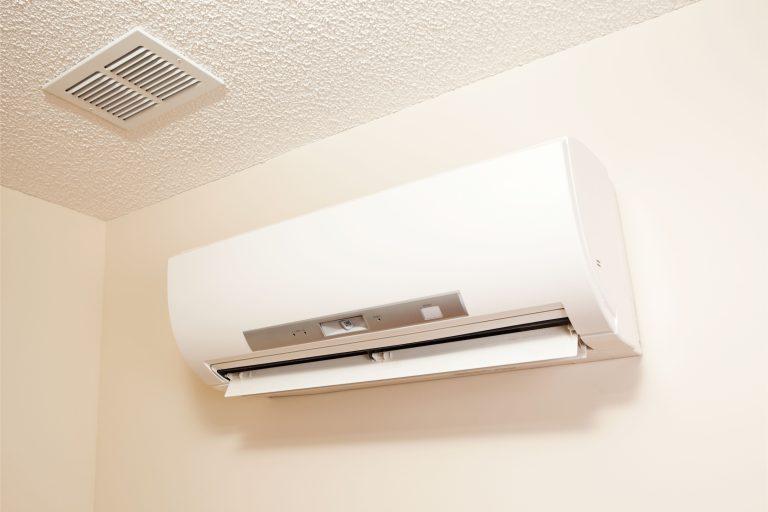- (707)-741-1993
- chris@precisionhvacco.com
- Serving Solano & Surrounding Counties
The Pros and Cons of Ductless Mini Split Systems

The use of ductwork across many homes in the US has left many not knowing that you can have ductless cooling or heating unit systems. Those are the ductless mini split systems. They allow heating and cooling even without ducts. The hot or cold air just has to leave the system straight to the room without following a conduit.
Well, these days, we have lots of people choosing these ductless systems over traditional HVAC units. But still, some prefer ductwork to ductless. And they all have reasons for their preference. Many people who get to know about the ductless mini split systems get to search for reasons why people who use it chose to use it over the traditional HVAC units and if it’s the best choice for them.
In this article, we will discuss a bit about the mini-split, and then, its pros and cons.
Let’s dive ahead!
A Brief About the Ductless Mini Split System
The ductless mini split system is usually tasked with cooling/heating a room without the use of ducts. It comprises two sections — an indoor unit and an outdoor unit. The mini-split pumps heat from indoors to outdoors to cool the room. And from outdoors to indoors to heat the room. Let’s briefly explain these units.
Indoor unit
This unit consists of a blower and evaporator that draws warm air from the room and sends it outside the unit. The unit further sends the air outside.
Outdoor unit
This is where the all-important compressor is located. It collects outside air and sends it to the indoor unit. This indoor unit further sends the air straight to the room.
Pros of Ductless Mini Split Systems
Let’s find out why some people will always choose ductless mini-split systems over the traditional HVAC unit even in the next life.
1. Energy efficiency
Ductless mini-split systems are more energy efficient than traditional HVAC units because of various reasons. Unlike the HVAC systems, the ductless mini-split doesn’t create heat energy the traditional way of heating up a furnace which can take a whole lot of energy. It creates heat by absorbing the heat energy outside a room and transporting the heat to the room. That’s cheap.
Also since heat is transferred from the furnace to the room through ducts, there can be heat loss during this transfer. This energy loss is about 30% of the total energy consumed. That’s a huge loss. And there is further loss of the duct which has holes and cracks.
Finally, since the ductless mini-split is focused on just one room, you can escape the trouble of heating/cooling all the empty rooms in the house just to heat/cool one room. The mini split is 3X more efficient than the HVAC unit having both an AC and heater. Enjoy the lesser bill!
2. Zoning
With a ductless mini split system, you can have customized temperature control in different rooms of the house. Some rooms might be more exposed to sunlight making them warmer than other rooms. Different family members can have different temperature preferences at different times. The traditional HVAC system can’t solve these problems as they subject the entire house to the same temperature and can’t produce variations. With the mini-split, you can make your entire home occupants comfortable.
3. Ease of installation
Being ductless, it’s way easier to install the mini split system than the traditional HVAC system. Making the installation cost cheaper. It’s so easy that there are effective DIY techniques to install yours, although it’s safer to let the professionals do it. Basically, the chunk of the work is to drill a 3-inch hole into the wall. Then use a connecting pipe to connect the indoor unit to the outdoor unit. Phew, you are done. It’s that simple!
4. Less noise
Every space cooler/heater makes noise in the form of vibrations. That’s why they are machines. But ductless mini-splits have proved to produce lesser noise than normal. Ductwork systems, thanks to the ducts, as the hot/cooled airflow through the duct, it produces significant vibrations which can be disturbing to some people. Those sets of people will appreciate the ductless system. They only produce vibrations that are noticeable in quiet rooms.
Cons of Ductless Mini Split Systems
1. Higher upfront cost
On an overall scale, a ductless mini split system is more expensive than a traditional HVAC unit. They can cost about 30% more than a central AC. And that’s one of their biggest cons. Although the costs vary on some factors like the size of the unit, the number of indoor units, and the complexity of installation. It also depends on your location.
Well, this shouldn’t be much of a problem if you are a long-term planner. This is because, when you compare the cost of the utility bill the traditional HAVC system generates, to the upfront cost of the ductless mini-split system, you’ll count the ductless mini split as a cost-effective option.
2. Aesthetics
Ductless mini split system can deteriorate the aesthetic value of your home. The indoor unit usually protrudes into the house and the outdoor is outside the house. This may look unsightly especially if installed in a highly visible area or if more than one is installed in the house. Although some manufacturers are putting in efforts to make some ductless mini split systems more aesthetically pleasing, they can’t still beat the fact that it is bulky and remains unattractive regardless.
3. Limited heating capacity
Unlike the traditional AC units, the ductless mini split can only heat limited space. They are one-room ACs. They’ll struggle to heat/cool larger spaces. If you are a fan of the open concept of living space, the ductless will have a hard time doing its job. It will only create uneven temperatures around the room, hot spots, or cold spots which can be uncomfortable.
Final Thoughts
The ductless mini-split system is a cooling/hearing technology that comes with beautiful advantages. With it you can save some extra money on the utility bill, you can zone cool/heat, it’s easy to install, and produces less noise. But just like every other technology, it also has its downsides. It’s more expensive to install, has an unsightly look, and you can’t cool/heat a huge room.
Having the pros and cons in your sight, you can now make an educated decision if it’s a system for you or not. But overall, it’s a really nice system and the choice of many Americans.
Precision HVAC is tasked with the goal of making your home more efficient to save some money. Our technicians have all it takes to guide you through the best decision in providing HVAC services at an affordable rate. Reach out to us for your HVAC solutions.
Frequently Asked Questions
A ductless mini split system is a heating and cooling system that works without traditional ductwork. It consists of two main units: an indoor unit (which contains a blower and evaporator) and an outdoor unit (where the compressor is located). These systems provide targeted heating or cooling to specific rooms, making them ideal for homes without ducts.
The system pumps heat from indoors to outdoors to cool a room and transfers heat from outside to inside to warm a room. The indoor unit draws warm air from the room, sends it outside, and brings in fresh, cooled air. The outdoor unit collects air from outside and delivers it to the indoor unit.
- Energy Efficiency: These systems are more energy-efficient than traditional HVAC units because they transfer heat instead of generating it. They also avoid energy loss through ducts and allow for targeted heating or cooling of specific rooms.
- Zoning Capabilities: You can set different temperatures in different rooms, catering to individual preferences or room exposure to sunlight.
- Ease of Installation: They are easier and quicker to install than ducted systems, requiring only a small hole in the wall to connect the indoor and outdoor units.
- Less Noise: Ductless systems produce less noise compared to traditional HVAC systems, as there are no vibrations from air traveling through ducts.
- Higher Upfront Costs: The initial installation cost of ductless mini split systems is typically higher than traditional HVAC systems, but long-term savings can make up for this.
- Aesthetic Impact: The indoor unit is visible inside the room and can detract from the aesthetics of a space, especially in highly visible areas.
- Limited Heating/Cooling Capacity: Ductless systems are designed for smaller, specific areas and may struggle to heat or cool large, open spaces.
Yes, ductless mini split systems are more energy-efficient because they transfer heat rather than create it, eliminating the energy loss that occurs with ductwork. They also allow you to heat or cool only the rooms you are using, which reduces energy consumption.
